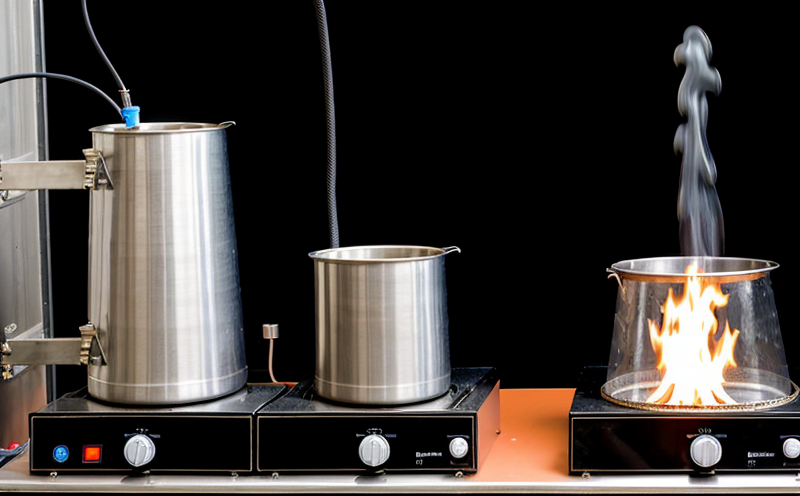ASTM E1354 Smoke and Heat Release Rate Testing
The ASTM E1354 standard is widely recognized for its comprehensive approach to assessing the smoke and heat release characteristics of materials used in various applications, particularly those intended for use in environments where fire safety is a critical concern. This test measures both the amount of smoke produced per unit area (smoke generation rate) and the rate at which heat is released during combustion.
The primary purpose of ASTM E1354 testing is to provide quantitative data that helps manufacturers, quality managers, and compliance officers ensure their products meet safety standards. This information is crucial for assessing the fire hazard potential and understanding how materials will behave under real-world conditions when exposed to flames or other ignition sources.
The test involves placing a specimen in a controlled environment where it undergoes combustion. Sensors measure the rate of heat release (RHR) and smoke production over time. The data generated from this testing can be used to evaluate the material's flammability, flame spread characteristics, and overall safety performance.
Understanding these parameters is essential for industries such as textiles, building materials, furnishings, and electronics, where fire safety is paramount. The results of ASTM E1354 testing can inform design decisions, guide product development, and ensure compliance with regulatory requirements.
| Parameter | Description |
|---|---|
| Smoke Generation Rate (SGR) | The volume of smoke produced per unit area per second. |
| Heat Release Rate (HRR) | The rate at which heat is released during combustion, measured in kilowatts per square meter. |
These parameters are critical for understanding the fire performance of materials and products. For instance, a lower smoke generation rate indicates that less smoke will be produced when the material burns, which can significantly reduce the risk of inhalation injuries in case of a fire.
The ASTM E1354 test is conducted using specialized equipment like the Cone Calorimeter or Smoke Production Rate Apparatus (SPRA), both designed to simulate real-world combustion scenarios. The specimen, typically cut into standard sizes, is placed in the apparatus and exposed to an ignition source.
The testing process involves monitoring the specimen's response over time, capturing data on heat release and smoke production. This data is then analyzed to determine compliance with relevant standards or internal specifications.
- Standardized testing ensures consistent results across different materials and products.
- Data from ASTM E1354 can inform product design improvements aimed at enhancing fire safety.
Eurolab Advantages
Eurolab is a trusted partner in providing ASTM E1354 testing services, offering several advantages that set us apart:
- Accredited Facilities: Our laboratories are accredited to international standards, ensuring the highest level of accuracy and reliability.
- Expertise in Fire Safety: Our team comprises experienced professionals with deep knowledge of fire safety testing protocols.
- Comprehensive Reporting: We provide detailed reports that include all relevant data points from the test, facilitating easier interpretation and implementation.
- Regulatory Compliance: Eurolab ensures that all tests are conducted in accordance with current regulations and standards.
Why Choose This Test
- Comprehensive Fire Safety Insights: ASTM E1354 provides a holistic view of a material's fire performance, helping manufacturers make informed decisions.
- Regulatory Compliance: Ensures compliance with international standards like ISO and ASTM, which are widely recognized in global markets.
- Risk Mitigation: Early identification of potential hazards through testing can prevent costly recalls and improve product safety.
Use Cases and Application Examples
| Application | Description |
|---|---|
| Furnishing Materials | Evaluating the fire performance of textiles, upholstery, and other furnishings to meet safety standards. |
| Building Products | Assessing the flammability and smoke production characteristics of insulation materials and other building components. |
- Furnishing Materials: Upholstered furniture, curtains, and drapes are common items evaluated for their fire safety properties using ASTM E1354. Lower smoke generation rates and heat release rates indicate safer products.
- Building Products: Insulation materials in walls and ceilings can significantly impact a building's fire performance. ASTM E1354 helps ensure these materials meet strict safety criteria.





